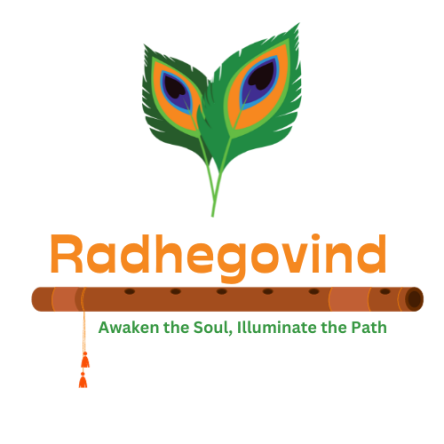
The story of Radharani and her Asthasakhis, also known as the eight principal companions, is a beautiful and cherished part of Hindu mythology, particularly in the context of Lord Krishna’s divine pastimes in Vrindavan. These eight sakhis are the closest confidantes and friends of Radharani and play a central role in facilitating the divine love between Radha and Krishna.
Here’s a glimpse of their story:
In the enchanting forests of Vrindavan, the love between Radharani and Lord Krishna bloomed like an eternal garden of divine affection. Radharani, with her unparalleled beauty, grace, and devotion, was the quintessential embodiment of divine love. Her love for Krishna transcended all worldly boundaries.
The Asthasakhis, or the eight principal companions of Radharani, were her dearest friends, confidantes, and partners in the divine pastimes of Radha and Krishna. These eight sakhis were Lalita, Vishakha, Chitra, Champakalata, Tungavidya, Indulekha, Rangadevi, and Sudevi.
Each Asthasakhi had unique qualities and talents that complemented the divine play of Radha and Krishna:
- Lalita: Lalita was the chief of the sakhis, known for her deep understanding of the intricacies of Radha and Krishna’s love. She played a crucial role in mediating their love quarrels and facilitating their union.
- Vishakha: Vishakha was Radha’s close friend and was known for her eloquence. She often engaged in playful banter with Krishna and helped convey Radha’s messages to him.
- Chitra: Chitra was an artist who captured the divine beauty of Radha and Krishna through her paintings and drawings. She immortalized their love through her art.
- Champakalata: Champakalata was a culinary expert who delighted Radha and Krishna with her delicious preparations. Her cooking added flavor to their divine meetings.
- Tungavidya: Tungavidya was a talented musician who enchanted Radha and Krishna with her melodious songs and dances.
- Indulekha: Indulekha was an expert in preparing fragrant and beautiful flower garlands for Radha and Krishna, enhancing the charm of their meetings.
- Rangadevi: Rangadevi was skilled in arranging and decorating the secret meeting places of Radha and Krishna, creating an enchanting atmosphere for their rendezvous.
- Sudevi: Sudevi was known for her discretion and played a vital role in maintaining the confidentiality of Radha and Krishna’s divine love.
Together, these Asthasakhis supported Radharani in her love for Krishna. They were the guardians of her love, ensuring that it remained pure and divine. They arranged secret meetings, conveyed messages, and offered their unwavering support in the eternal love story of Radha and Krishna.
The story of Radharani and her Asthasakhis is a timeless celebration of divine love, friendship, and devotion. Their collective love for Lord Krishna and their dedication to Radharani exemplify the boundless love that permeates the spiritual realm of Vrindavan, where every moment is a celebration of love in its purest form.



You must be logged in to post a comment.